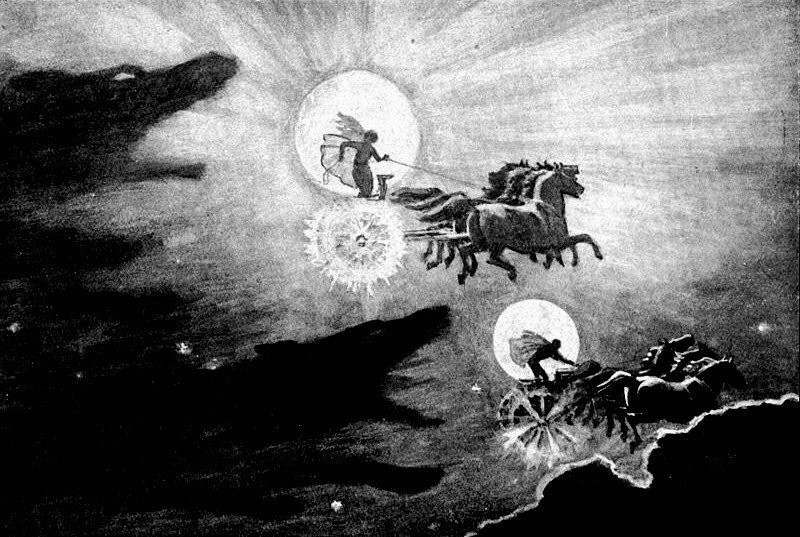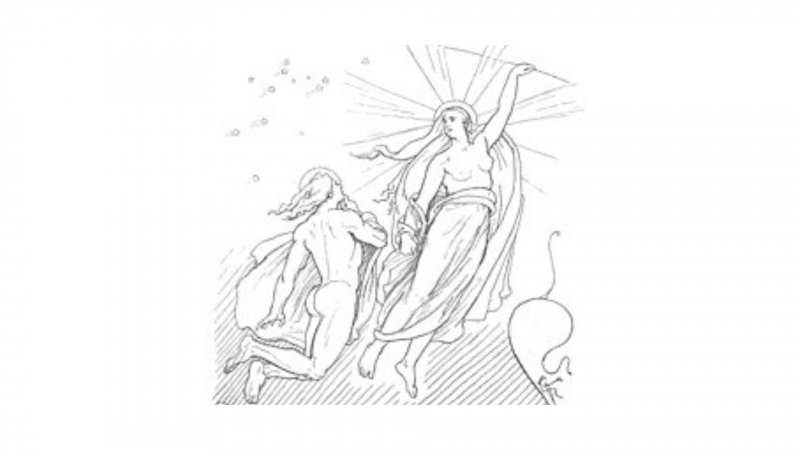Máni

The Moon is personified as Máni in Germanic mythology. Personified Máni is mentioned in the Prose Edda, which Snorri Sturluson wrote in the 13th century, as well as the Poetic Edda, which was assembled in the 13th century from older traditional sources. He is described as the son of Mundilfari and the brother of the personified sun, Sól, in both sources. The Prose Edda adds that he travels through the skies with his two offspring, Hjki and Bil. Máni appears in Old Norse literature as a proper noun. Scholars have put forward suggestions regarding Máni's conceivable relationship to the Northern European idea of the Man in the Moon and a perhaps unrecorded tale of Máni through skaldic kennings.
John Lindow asserts that Máni's death at Ragnarök is necessary for the formation of the Sir. The only person who might have brought this up expressly is Snorri. He speaks about Mánagarm, who will eat a celestial body, possibly the Moon. He gets gorged on by Fenrir, the enormous wolf of Ragnarök. When the Sun and Moon siblings first manifested while the universe was being created, they had no idea what their abilities were in the brand-new universe. Then the gods assembled and made the many hours of the day, the seasons, and the Moon's phases. Then, in the scheme of things, the Gods assigned Sol and Mani their position. They ride horse-drawn chariots through the air. No names are given to the horses that pull Máni's chariot. However, Sol's mounts are Alsvir ("Swift") and Árvakr ("Early Riser"). That's all about the ninth most famous Norse gods we want to mention!











